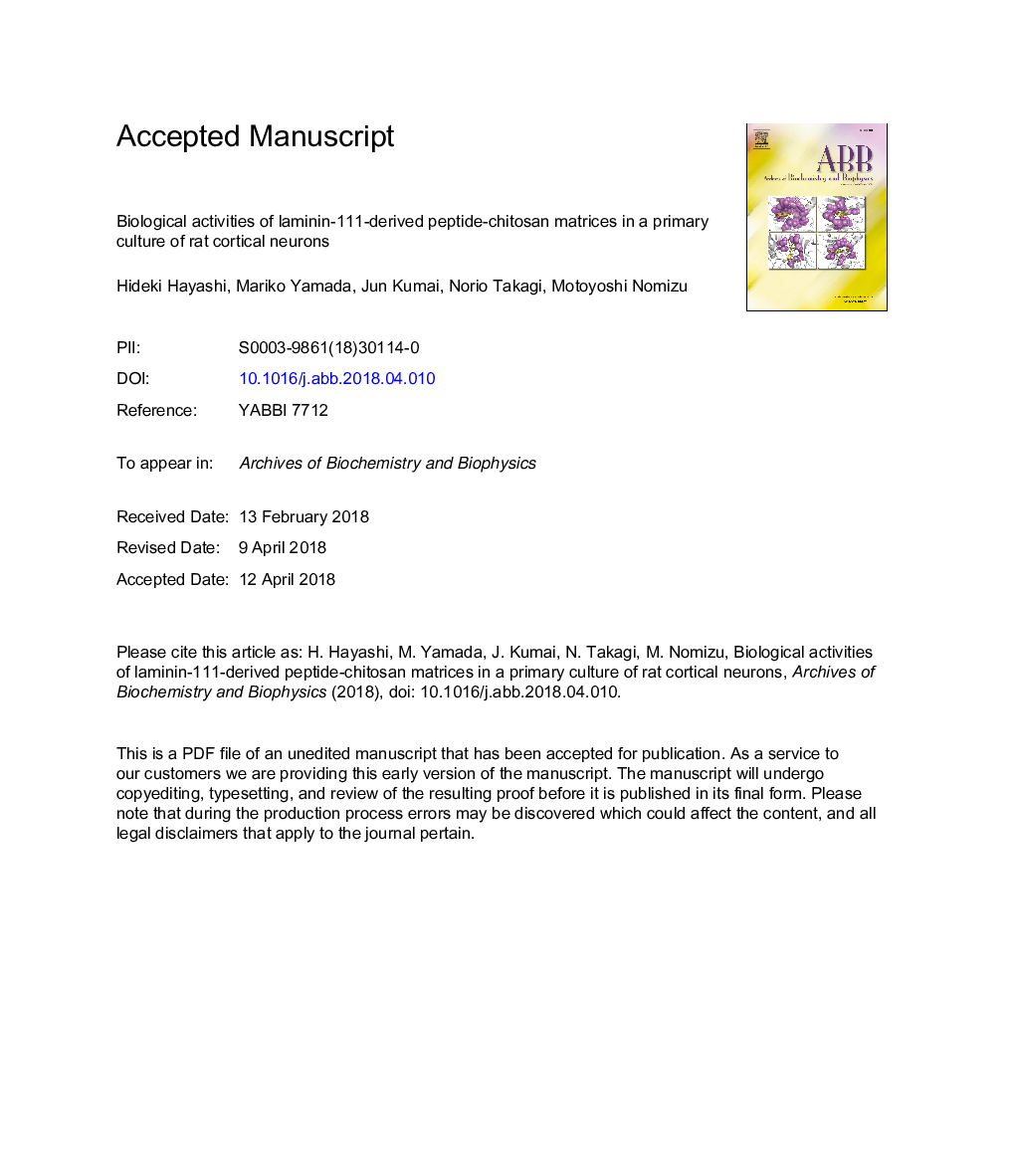| Article ID | Journal | Published Year | Pages | File Type |
|---|---|---|---|---|
| 8288558 | Archives of Biochemistry and Biophysics | 2018 | 33 Pages |
Abstract
Cell adhesive biomaterials have been used for various cells in culture, especially for primary cultures of neurons. Here we examined laminin-111 and its active peptides conjugated to chitosan matrices (ChtMs) for primary culture of rat cortical neurons. Laminin-111 on poly-d-lysine substrate promoted neuronal cell attachment and differentiation. The biological activity of six active laminin-111-derived peptides was examined using a peptide-ChtM construct. When the syndecan-binding peptides, AG73 (RKRLQVQLSIRT, mouse laminin α1 chain 2719-2730) and C16 (KAFDITYVRLKF, laminin γ1 chain 139-150), were conjugated to chitosan, AG73-ChtM and C16-ChtM showed potent neuronal cell attachment activity and promoted axon extension by primary cultured rat cortical neurons. However, the remaining peptides, including integrin-binding peptides, did not show activity when conjugated to ChtM. AG73-ChtM and C16-ChtM also supported neuron survival for at least 4 weeks in serum-free medium without a glia feeder layer. These data suggest that AG73-ChtM and C16-ChtM are useful for primary cultures of central nervous system neurons and have a potential for use as functional biomaterials for tissue engineering in the central nervous system.
Keywords
Related Topics
Life Sciences
Biochemistry, Genetics and Molecular Biology
Biochemistry
Authors
Hideki Hayashi, Mariko Yamada, Jun Kumai, Norio Takagi, Motoyoshi Nomizu,
